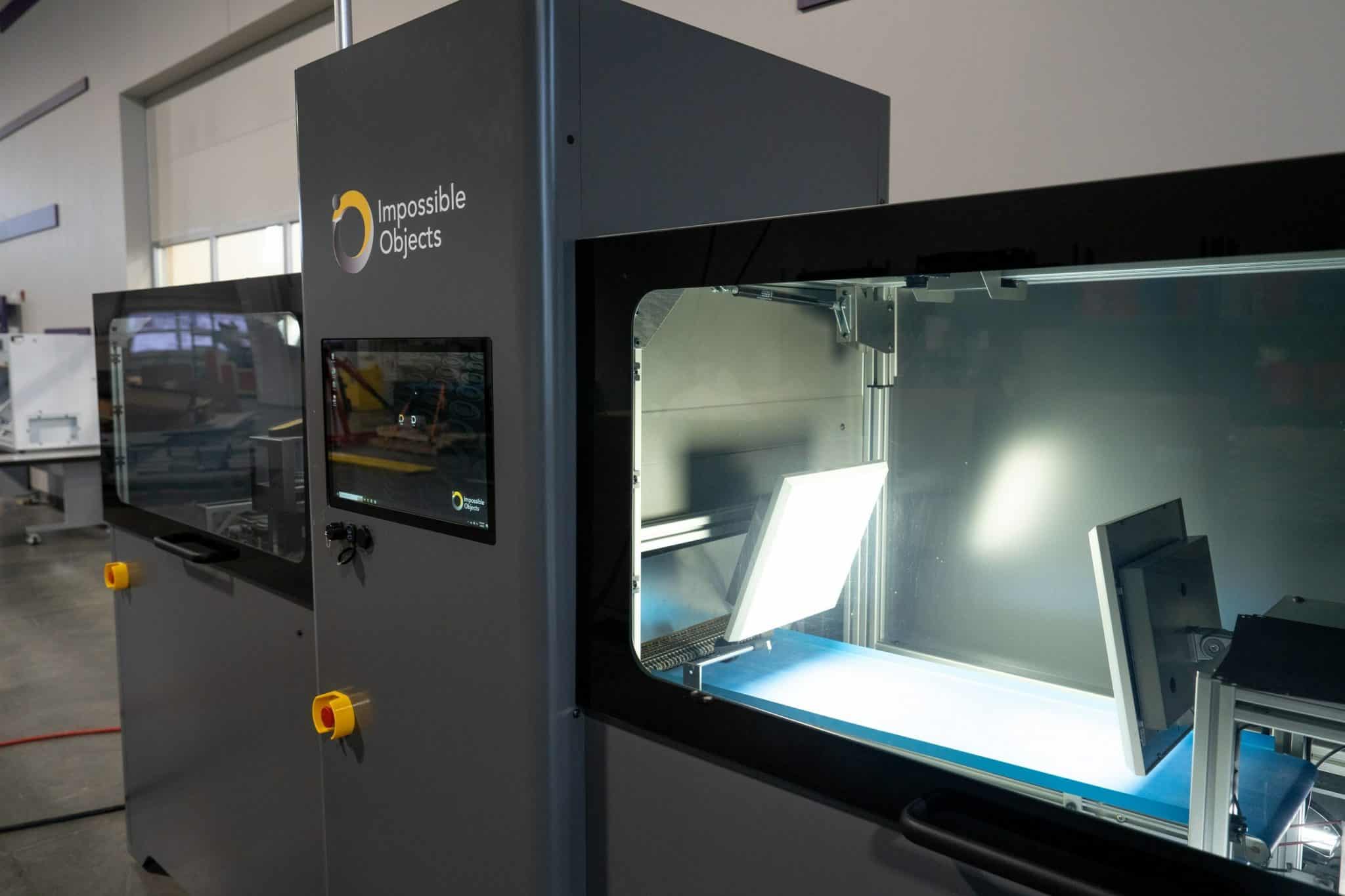Weber State University is using 3D printing to advance its research on composite materials that support northern Utah’s aerospace and defense ecosystem. The university’s Miller Advanced Research and Solutions Center recently upgraded and installed the Impossible Objects’ Composite-Based Additive Manufacturing system, or CBAM-2. The machine prints composite materials that can then be used to design parts for a range of high-tech applications.
Located near Hill Air Force Base, Utah, the MARS Center brings together Weber State University students and faculty with industry experts who can apply innovative solutions to real-world problems – especially in the realm of national defense.
“Composite materials are of high interest to the military, and the ability to 3D print those parts on demand with CBAM gives us an advantage to participate in more projects and recruit the best talent,” said David Ferro, dean of WSU’s College of Engineering, Applied Science & Technology.
Manufacturing on Demand
According to David Ferro, Weber State has a long history with Impossible Objects and believes the new system – a leap in technology from the center’s previous CBAM printer – will be a valuable tool in aerospace research among academia, defense, and commercial partners.

“We’ve used this technology to print parts for legacy aircraft, aging jets that need replacement parts, or tools that aren’t in production anymore,” said Devin Young, grant writing and research specialist at WSU, who works at the MARS Center. “CBAM makes parts that are lighter and stronger than some of the other methods out there, and it does it faster… We’ve found a range of uses for this technology, from large aerospace companies to small local businesses.” A recent example of 3D printed parts made using Impossible Objects’ technology includes a strap that keeps first-aid kits secure inside aircraft currently flown by the US Air Force.
According to Steve Hoover, CEO of Impossible Objects, the CBAM-2 system’s Carbon Fiber PEEK 3D printed material achieves excellent mechanical properties and is a cutting-edge alternative for aluminum prototyping, tooling, spares, and repairs. “The MARS Center is at the forefront of aerospace and defense research,” said Steve Hoover. “We’re proud that they’ve selected CBAM technology, and have already engaged in several projects that have exciting potential for the Department of Defense, Department of Energy, and other industrial partners.”
The MARS Center opened in August 2022 thanks to a $3.5 million donation from the Larry H. & Gail Miller Family Foundation. The CBAM 3D printer from Impossible Objects is among the first advanced manufacturing technologies to be installed and used at the new facility.
You might also like:
3DPRINTUK increases MJF capacity by 50%: This year kicked off with the addition of new machines to the company’s 3D printer portfolio – increasing capacity and management of lead times for clients. This month, 3DPRINTUK added a third HP MJF machine – increasing capacity with this technology by 50%. The company has also invested in another EOS Formiga SLS machine, which brings the total EOS SLS machine count at the London facility to 13.
* This article is reprinted from 3D Printing Media Network. If you are involved in infringement, please contact us to delete it.
Author: Edward Wakefield


Leave A Comment